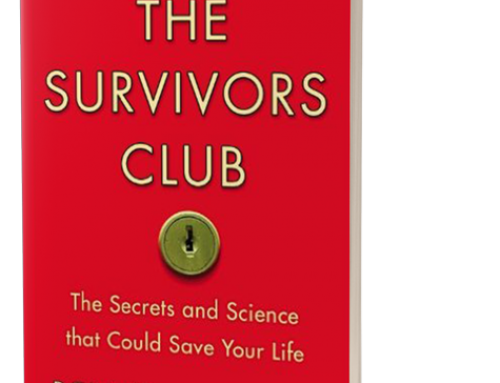This is part 10 in the series: RESILIENCE
You prepare and practice for it.
My profession loves to talk about pathology. We love to talk about crazy people. We love to talk about how people get broken, how tragic that is. It is true that some people get broken, and it is tragic. But we fail to see that in tragedy and in adversity there is a great deal of good that comes out of it.
There is a great book that I would recommend called The Survivor’s Club. The author Ben Sherwood went through survival training with the Navy. They put him in the helicopter dunk tank and had him do all the things that Navy recruits have to do for survival training.
He talks about post-traumatic stress. My profession love to talk about post-traumatic stress disorder (PTSD) and how horrible it is. In reverential tones, we discuss those veterans who have experienced it and the ones who were in midst of it. It is very painful. I have worked with veterans and I understand that. I’ve watched men in emotional pain decades after their combat experience. I’ve worked with people with Post Traumatic Stress Disorder after Vietnam. It isn’t pretty. Decent men plagued by intrusive thoughts decades after leaving the combat zone.
But here’s what we know.
If we look at Aviator POW’s versus drafted and enlisted POW’s, the rates of PTSD are 18% for Aviators. These people were prisoners of war, shot down over Vietnam, put in the Hanoi Hilton, Admiral Stockdale, John McCain and the rest of them – their rate of Post Traumatic Stress Disorder was 18%. Given what they went through, that is an incredibly, spectacularly low rate of PTSD. Why?
They were trained for it.
They were hand selected for their strengths. You don’t just give any guy a three million dollar jet to fly. So they were hand selected for their strengths and then they were trained for adversity.






